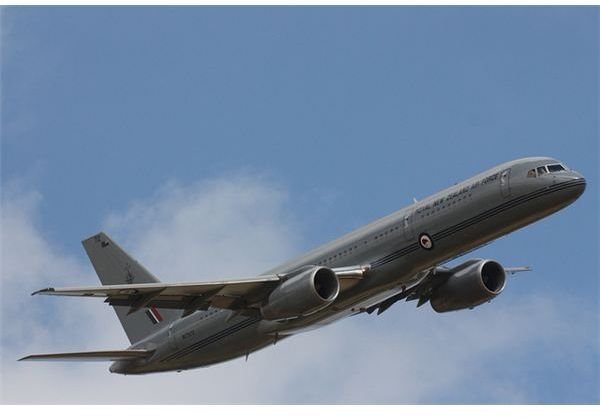What is the Normal Cruising Speed of a Commercial Jetliner?
Cruising Airliners
Jet airliners are usually the fastest way for most of us to get anywhere that is more than a few hundred miles away. A quick answer to the question of what is the normal cruising speed of a commercial jetliner; 500 miles per hour is not a bad ballpark figure. In reality, airline pilots use several different types of speed indications to meet air traffic control restrictions and fly their jets at the most fuel efficient cruise speed.
Typical Flight Profile
Here is a typical flight profile for a Boeing 757/767 airliner flying from New York City to Los Angeles, California. The speeds are provided as the flight crew plans. They are then converted to miles per hour – mph. Speed calculations are based on the Boeing 757-200 aircraft with a takeoff weight of 220,100 pounds. Knots used here means knots indicated airspeed – KIAS.
Takeoff is at 152 knots – 175 mph.
Climb out is at 167 knots – 192 mph – until 1,000. Speed is increased to 250 knots – 288 mph – until 10,000 then climbing speed is 300 knots – 345 mph until cruise mach is attained.
Cruise is at 0.78 to 0.79 mach depending on the fuel consumption rate. Mach is the speed of sound and varies by altitude, temperature and air density. At 35,000 feet altitude, mach 1 is 663.5 mph for standard conditions. It is a few mph faster for lower altitudes and a few mph slower for higher altitudes. For standard conditions in the 33,000 to 39,000 typical cruise altitude, 0.78 to 0.79 mach would be 515 to 525 mph.
Descent from cruise altitude is at cruise mach until indicated airspeed hits 300 kts. Descent continues at that speed until air traffic control directs speed changes for orderly traffic flow. Landing speed for the Boeing 757, know weighing 187,200 pounds is 126 knots – 145 mph.
Jet Airplane Speeds
Jet airliner pilots have indicators that show several different airspeeds. As noted above, sometimes they fly using the indicated airspeed and at other times in the flight, the mach number is used. Pilots also use knots instead of miles per hour, harking back to the days of sea faring navigators. Knots is nautical miles per hour. A nautical mile is 6,076 feet and is also equal to one minute of longitude. Ocean navigators measuring their position in latitude and longitude could easily calculate speed in knots from this information.
Indicated airspeed is the traditional method of measuring aircraft speed, before computers and GPS. Indicated airspeed measures the flow of air molecules passing an airplane to calculate the speed. As a plane goes higher in altitude, the air gets thinner and indicated airspeed declines in relation to the true airspeed of the plane. For example, an airplane cruising at 300 KIAS at 35,000 feet has a true airspeed of about 460 knots – a significant difference.
Using the mach number as a cruising speed automatically adjusts for non-standard conditions, particularly air temperature. Pilots flying at a specific mach number know the expected fuel efficiency of their jet. Finally, the 300 knots indicated airspeed is going to be pretty close to the 0.78 to 0.80 desired cruise mach when the airliner reaches a cruise altitude in the 30,000 to 40,000 region where most airliners fly.
References
Resources: Daniel Repasky, Delta Airlines Boeing 757 pilot.
Aerospaceweb.org: https://www.aerospaceweb.org/question/atmosphere/q0112.shtml
Photo credit: flamesworddragon on Flicker Creative Commons attribution
